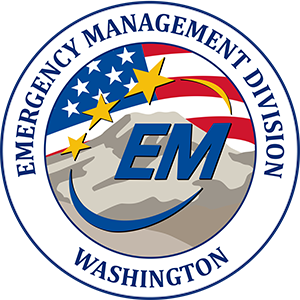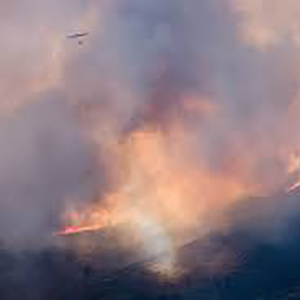Overview
Public health threats and hazards include natural disasters, disease outbreaks, and disasters caused by human actions. The more you know about the types of emergencies that might affect Spokane County, the better prepared you can be.
Natural Hazards and Disasters
Some of the most common natural hazards in Spokane County are wildfires, extreme heat, winter storms, and floods. Protect yourself, your family, and your home by preparing before disasters strike.

Wildfire
risk varies by location, conditions and the season. Wildfires can threaten lives and destroy homes, property, and natural resources. If you are advised to evacuate, do so immediately.

Smoke from wildfires contains harmful chemicals and fine particles that can be dangerous, even for healthy individuals. Wildfire smoke can cause immediate health effects including coughing, trouble breathing, and chest pain, especially in individuals with pre-existing health conditions. Repeated, frequent or prolonged exposure to wildfire smoke can have long-term health consequences.

Annually, extreme heat events cause more deaths than any other type of weather event.. Heat-related illness and death are preventable. Know the signs of heat-related illnesses. Learn how you can protect your health and your family during hot weather events. Find out your local six-day heat risk using the National Weather Service’s HeatRisk Forecast map.

Winter storms can bring heavy snowfall, freezing rain or blizzard conditions with blinding, wind-driven snow that lasts several days. Exposure to very cold temperatures can be dangerous. Learn how to heat your home safely to avoid burns, fires and carbon monoxide poisoning.

Floods can cause loss of life and damage structures, crops, roads, and utilities. Drinking water and food supplies may become contaminated by dirty flood water. Floods may also lead to erosion, landslides, and the movement of dangerous debris. Half of all flood-related drownings occur when a vehicle is driven into flood waters. If you see flood water on a road, remember the National Weather Service slogan, “Turn Around Don’t Drown.”
Disease Outbreaks

Disease outbreaks can disrupt daily life, have a negative impact on the economy, and lead to unnecessary illness and death. For information about current disease outbreaks in the United States and worldwide, please visit the Centers for Disease Control and Prevention's Outbreaks page.
You can help prevent the spread of disease by washing your hands, covering your cough and sneezes, staying home when sick, and receiving recommended vaccinations.
Human-Caused Disasters
Human-caused disasters can threaten public health and safety in many ways. Potential human-caused disasters include acts of war or terrorism, intentional dam breaches, cyber attacks affecting utilities like water and power systems, and disasters caused by negligence, such as wildfires.
In very large-scale disasters, power and water may be unavailable, and you may need to take care of your household for several days before help arrives. If you or anyone in your household relies on medical equipment that requires electricity, register life-sustaining medical equipment with your utility company and have a back-up plan. Be prepared with food, water and supplies to shelter in place at home for three to 14 days.

Washington State Emergency Management Division
Learn about the potential threats and hazards facing Washington citizens and communities.


